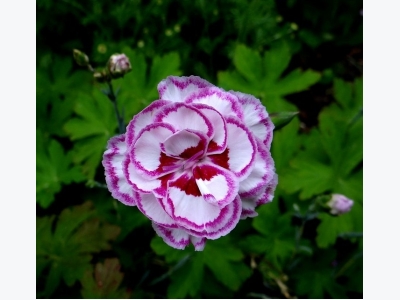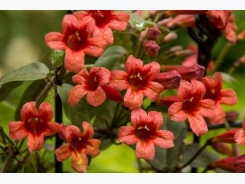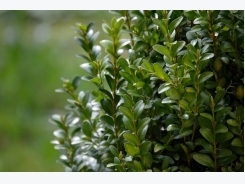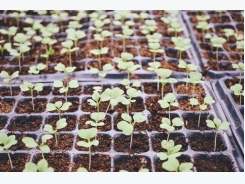How to Grow Carnations

From prom corsages to elementary school science experiments, carnations (Dianthus caryophyllus) serve a myriad of purposes as cut flowers. In the garden, they’re an easy-to-grow flower for borders and beds.
Native to Europe and Asia, carnation flowers were used in wreaths by the ancient Romans and Greeks. The name, carnation, means “flower of the gods.” Carnations were first introduced to the U.S. in 1852, as part of a French flower shipment. Their longevity as a cut flower quickly endeared them to U.S. customers. Today, most commercial carnations are grown in Colombia, Israel and Spain.
The carnations used for cut flowers are relatives of dianthus, also known as pinks. These flowers have similar growing requirements and all produce fringed flowers with a light, spicy fragrance. True carnations are usually grown in a greenhouse, but you can grow them in the home garden if you live in U.S. Department of Agriculture plant hardiness zones 5 through 9. In these climates, the plants will last for several years before languishing. The blooms probably won’t be as large or extravagant as those grown in a hot house, but carnations do make a lovely addition to the home garden.
Planting and Caring for Carnations
You can grow carnations from nursery transplants or divisions, but if you’re patient, you can also grow them from seed. Fill a seed starting tray with a moist, light potting soil. Sprinkle carnation seeds over the soil and top with an additional dusting of soil. Place plastic wrap over the seed tray and set the tray in a warm location, such as on top of the refrigerator. Mist it frequently with a spray bottle filled with water so the soil stays moist. Once the seeds germinate, move the tray to a sunny window. Keep the potting mix evenly moist. When the plants stand 4 inches tall, you can move them outdoors or to larger pots. They’ll bloom within a year or two.
Regardless of how you start them, carnations need a light, loamy soil to thrive. They don’t grow well in clay or soggy soils. Amend the soil with compost, peat moss, manure or small bits of bark to improve drainage. Plant carnations in full sun for best flowering. Fertilize carnations in spring as the plants emerge with 1 tablespoon 10-10-10 fertilizer per plant.
As carnation plants age, the middle of the plants sometimes begin to die or collapse, especially in poorly drained soils. Divide the plants every 3 to 4 years to keep them vigorous and reduce this problem. Cut the stems and bring carnations indoors to enjoy in cut arrangements or shear spent flowers to encourage more blooming.
Potential Pests and Disease Problems for Carnation Flowers
In the greenhouse industry, carnations are subject to a variety of diseases, such as anthracnose, leaf spot, rust, fusarium wilt and root rots. In the home garden, though, you can probably avoid most problems so long as you follow good planting and care protocols. Plant carnations in full sun and space them so air circulates adequately. Make sure the soil drains well and don’t overwater them. Use soaker hoses, rather than overhead sprinklers.
Pests are rarely a problem, but may include aphids, slugs and mites. Treat aphids and mites with an insecticidal oil or spray the plants with a stream of water. Dispatch slugs with slug bait.
Cultivars Worth Trying
The Dianthus family is a huge one and you’ll likely find carnations to fit every gardening need.
- ‘Clarion’ has clear yellow blooms and grows 16 inches tall.
- ‘Vienna Mischung’ is a dwarf variety that grows only 12 inches tall. It produces bi-color red and white blooms. This particular cultivar is only hardy in zones 6 through 9. Elsewhere, grow it as an annual.
- ‘Laced Romeo’ has red and pink petals fringed with white. Grows 12 inches high.
Có thể bạn quan tâm
Phần mềm

Phối trộn thức ăn chăn nuôi

Pha dung dịch thủy canh

Định mức cho tôm ăn

Phối trộn phân bón NPK

Xác định tỷ lệ tôm sống

Chuyển đổi đơn vị phân bón

Xác định công suất sục khí

Chuyển đổi đơn vị tôm

Tính diện tích nhà kính

Tính thể tích ao hồ



 Common Diseases of Peach Trees
Common Diseases of Peach Trees  Using Seedling Mats for Seed Germination Temperature
Using Seedling Mats for Seed Germination Temperature